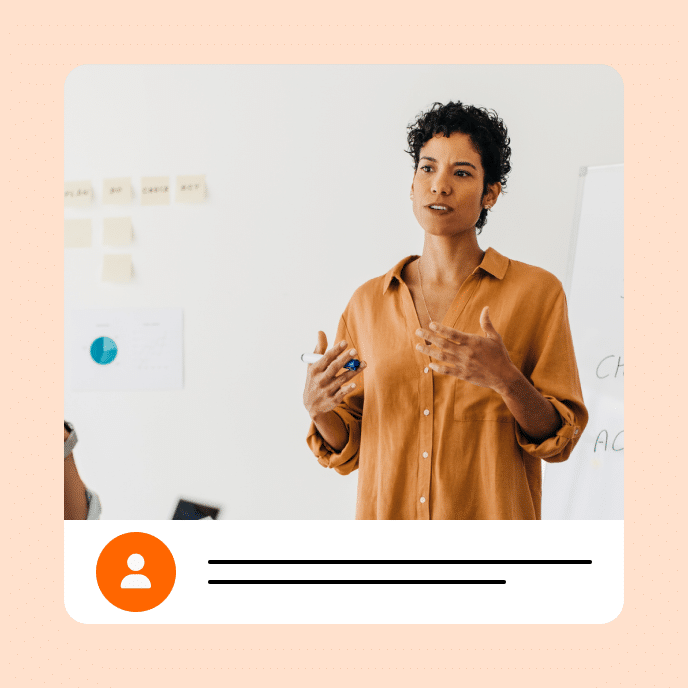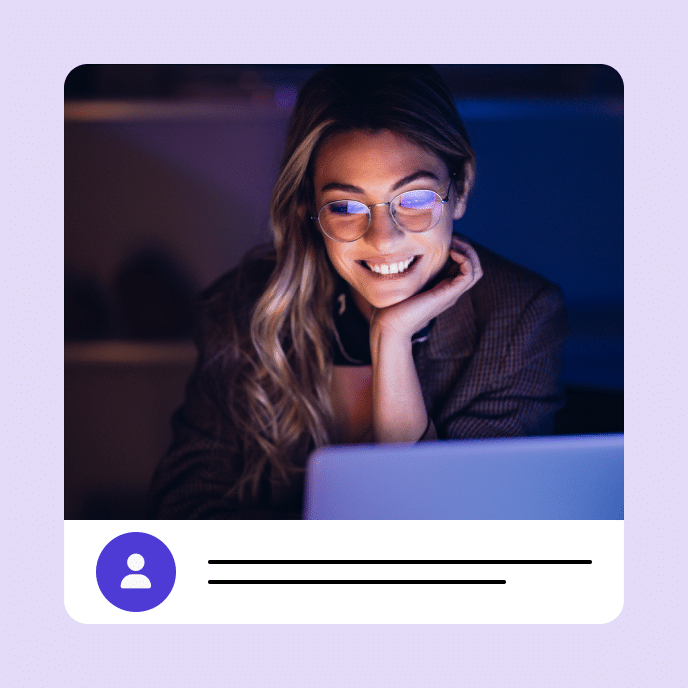What E-Learning Can Do for Meal Kit Recipes and Beyond
Think online training is just for employees? Think again! Discover how e-learning could transform meal kit recipes into dynamic experiences that engage and empower customers.
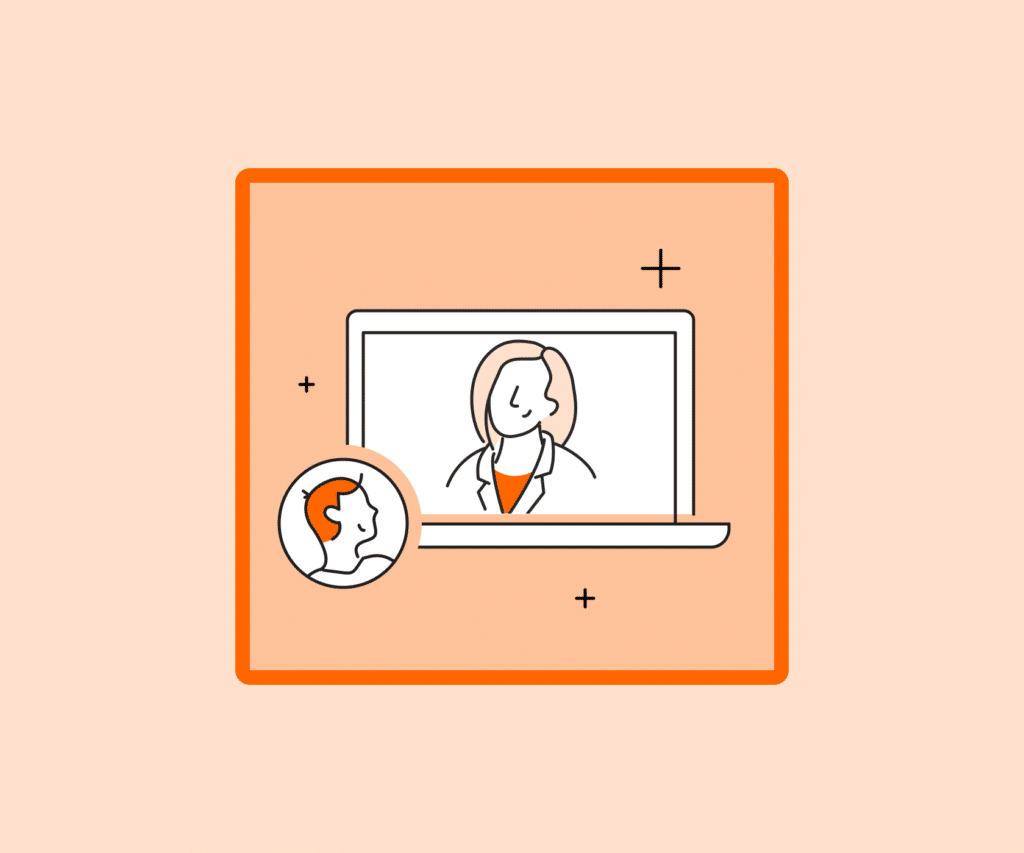
Can e-learning make dinner prep fun?
What comes to mind when you think of e-learning? Compliance training? Employee upskilling? Onboarding? You’re not wrong. But what about meal kit recipes? Stick with me. Recipes are, after all, training tools—guiding cooks through steps that build toward a final result.
Businesses like HelloFresh, Blue Apron, and Green Chef deliver a myriad of recipes to home cooks every week—often relying on printed cards or apps that mimic their paper counterparts. It works. But could it be better? I argue yes.
In this blog, we’ll use the meal kit model to challenge traditional ideas about what e-learning can do. We’ll explore what’s not working with static recipes and share how e-learning could change the game. Plus, we’ll serve up a bonus microlesson recipe that brings this concept to life.
Key Takeaways
Recipe delivery needs a makeover
Meal kit companies have reimagined almost every aspect of home cooking—from planning and grocery shopping to streamlining prep time and reducing food waste. Yet recipe delivery remains stuck in the past, with most businesses relying on printed cards or apps that mimic traditional cookbooks.
The format works, but it’s not without problems:
- Static and clunky. Recipe cards and booklets are designed to be read, not used. Customers can’t zoom in on text, collapse steps to focus on what’s next, or track progress while cooking.
- Space limitations. Every dish is different, but all printed recipes must fit into a single standardized format. This constraint often leads to clunky paragraphs that combine unrelated steps, making instructions harder to follow.
- Environmental impact. For eco-conscious consumers already uneasy about packaging waste, disposable recipe cards only add to the environmental burden.
- Limited visual and interactive support. For sighted cooks, a couple of photos can’t tell the whole story. Novice cooks might wonder: “What does minced look like?” Or, “What’s the consistency of a thickened sauce?”
- Accessibility barriers. Small, hard-to-read text isn’t fun for users with low vision. Likewise, digital versions often fail to integrate with screen readers or other assistive tools, making them equally frustrating.
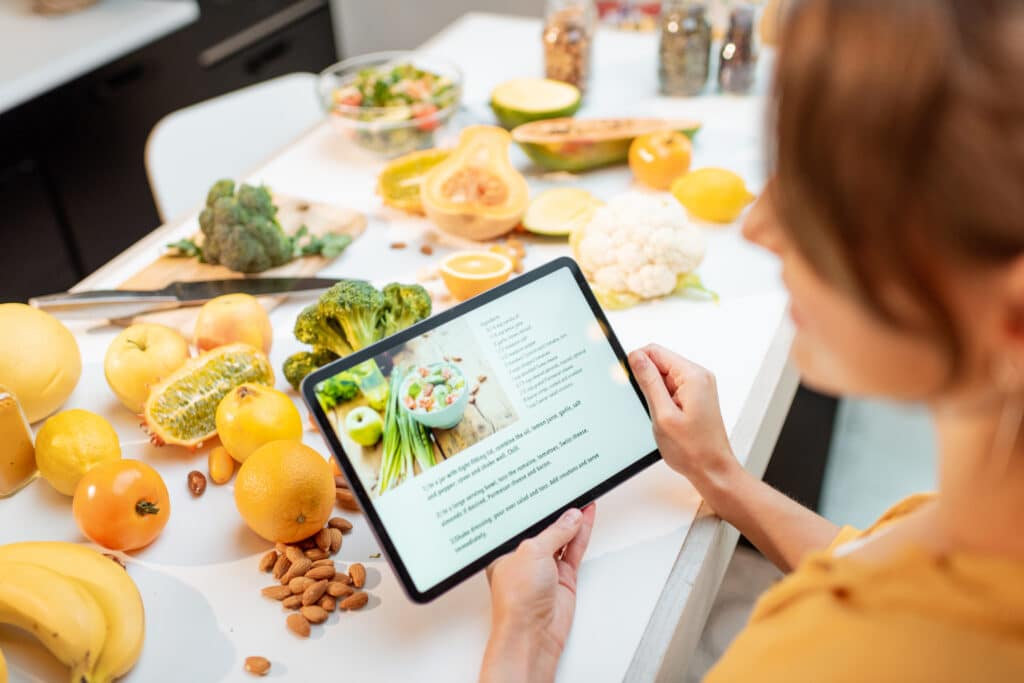
What can e-learning do? Reimagining recipe delivery
Meal kit companies are perfectly positioned to lead industry changes by replacing static recipes with engaging digital experiences. Here’s a taste of what’s possible:
1. Dynamic, user-controlled content
Recipes can become fun, interactive training experiences when delivered through digital courses and microlessons. For example:
- Step-by-step focus. Unlike a website or printed recipe where it’s easy to lose your place, e-learning fits to your screen, displaying just the step you’re working on. This minimizes distractions and keeps you on track.
- Expandable content. For those who want the big picture first, collapsible sections can give an overview while allowing deeper dives into specific components when ready.
- Interactive progress tracking. Features like checkboxes and process interaction steps keep recipes clean and organized, making tracking progress through each stage simple.
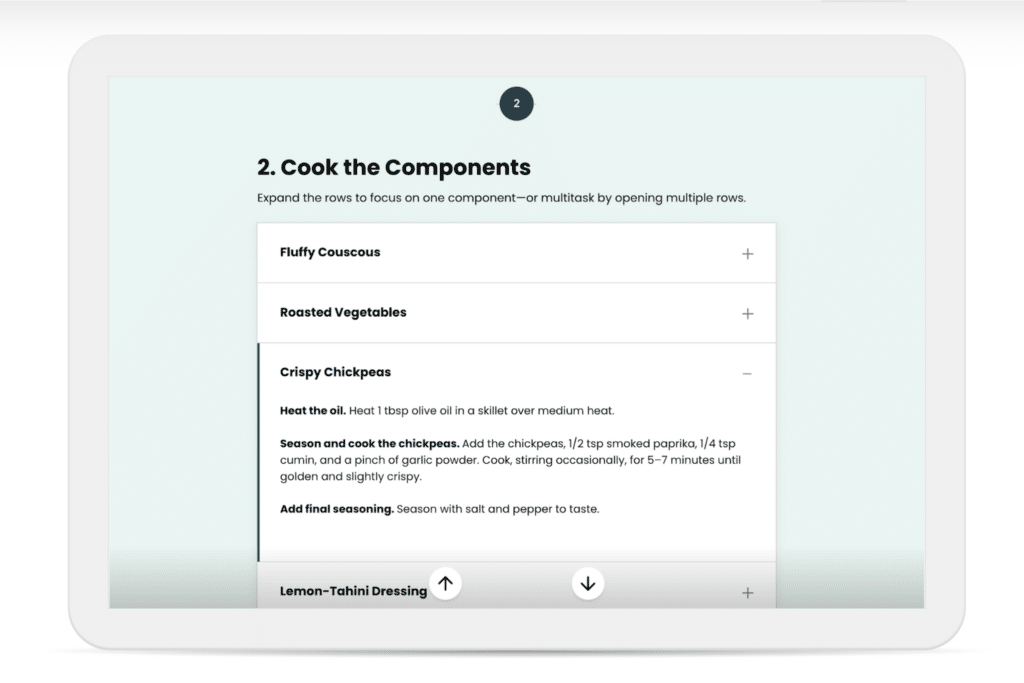
2. Smart training features
Traditional recipes assume that every person has the same skill level. But with interactive recipes, you can offer optional training tutorials. Here’s how:
- Flexible design. Digital platforms give you the space to create engaging content without the constraints of typical recipe cards, making new learning opportunities possible.
- Optional tips. Authors can include optional interactions and videos to train users as they go—teaching essential techniques like chopping, searing, or thickening sauces.
- Immersive skill-building activities. You can even support gamified training to help customers learn and become better cooks. For example, include activities where users choose the right knife for an ingredient or select the ideal oil for a dish. This would be a major selling point for inexperienced cooks who rely on meal kits to learn skills while saving time.
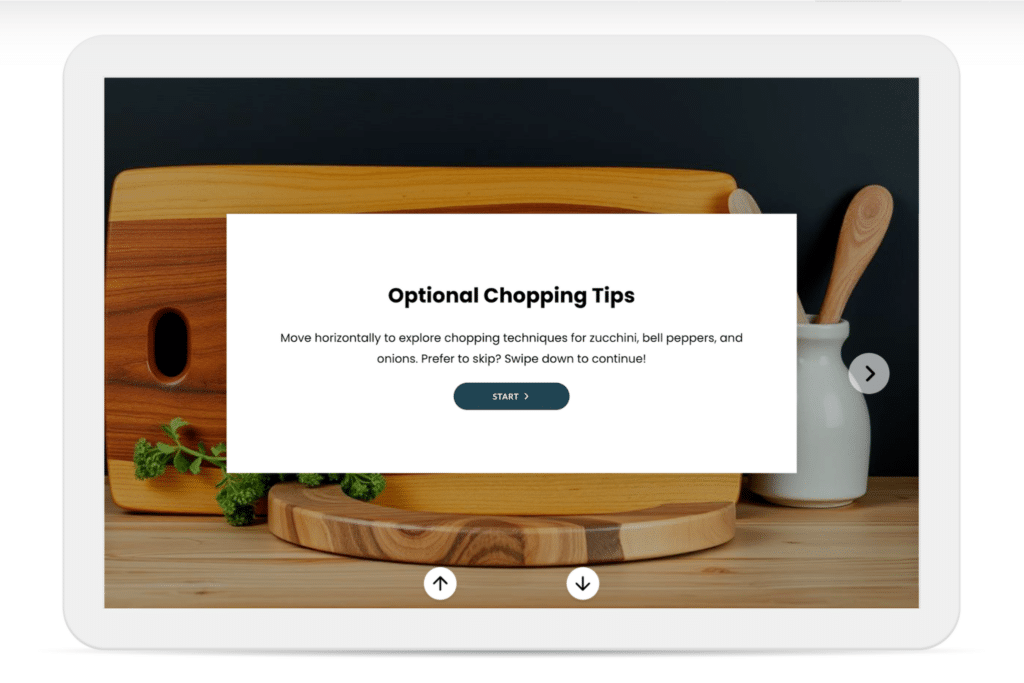
3. Enhanced digital capabilities
Online learning offers unique capabilities that simply aren’t possible with more static formats. Here are a few ideas to inspire you:
- Interactive timers. Add integrated timers to recipe steps. For example, include an audio file with the instructions: “Your tofu needs 10 minutes—start the timer here.”
- Video and audio narration. Take interactive recipes to the next level by recording your company chefs as they prepare entrées. Add a video block for visual learners and include audio narration for a listening-only experience.
- Interactive visual aids. Feature high-resolution photos with interactive image descriptions. For example, you might showcase a finished dish with markers explaining plating details.

4. Rich visual demonstrations
For sighted cooks, training videos, animations, and images can make recipes immersive. Consider these ideas:
- Short videos and GIFs. Demonstrate tricky techniques and support skill development with videos. For example, you can show the perfect sauce consistency with a GIF or explain proper dumpling-folding techniques with short videos.
- Split-screen comparisons. Help customers recognize the difference between success and failure with side-by-side pictures. For example, “golden brown” versus “not quite done.”
- Step-by-step visuals. To guide customers through complex processes, show detailed visuals of each stage, from prep work through plating.
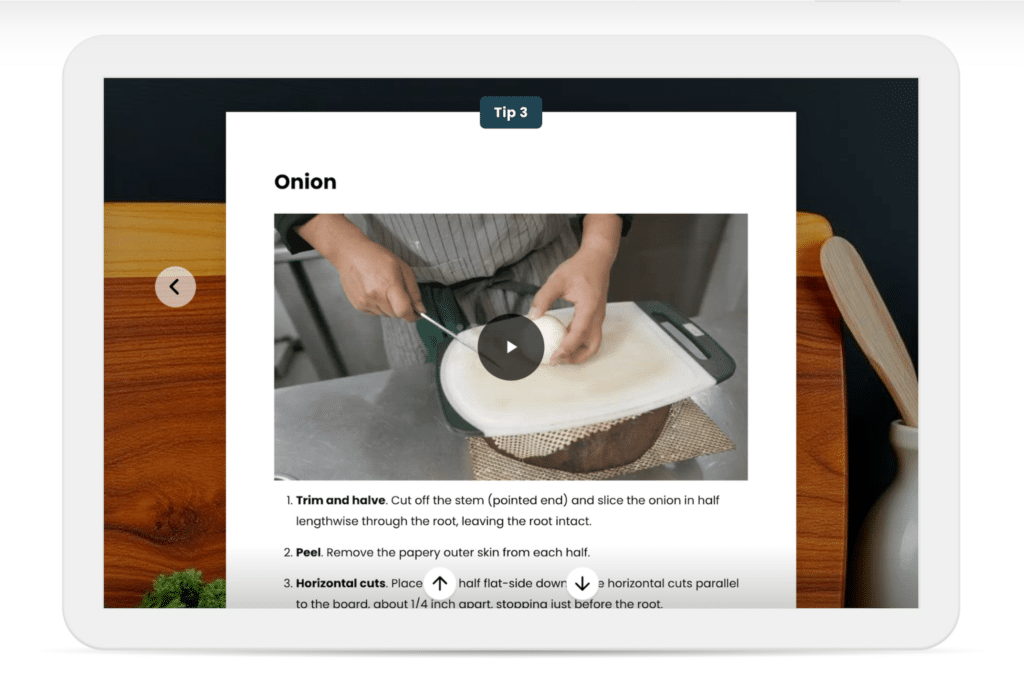
5. Built-in accessibility features
Cooking is universal, but static recipes aren’t. Small text, non-responsive designs, and poor compatibility with assistive technology can make traditional formats frustrating and unusable. Here’s how e-learning content is different:
- WCAG-compliant design. A good e-learning platform will meet accessibility standards like Web Content Accessibility Guidelines (WCAG), ensuring that your content is accessible, understandable, and usable for all learners.
- Assistive technology compatibility. E-learning works seamlessly with screen readers, magnification tools, and other assistive tech, enabling customers who are blind or have low-vision to follow instructions with ease.
- Responsive design. A responsive design means that customers can access recipes on any digital device, from desktops and tablets to phones. You can even include an optional PDF download for those who prefer printed versions.
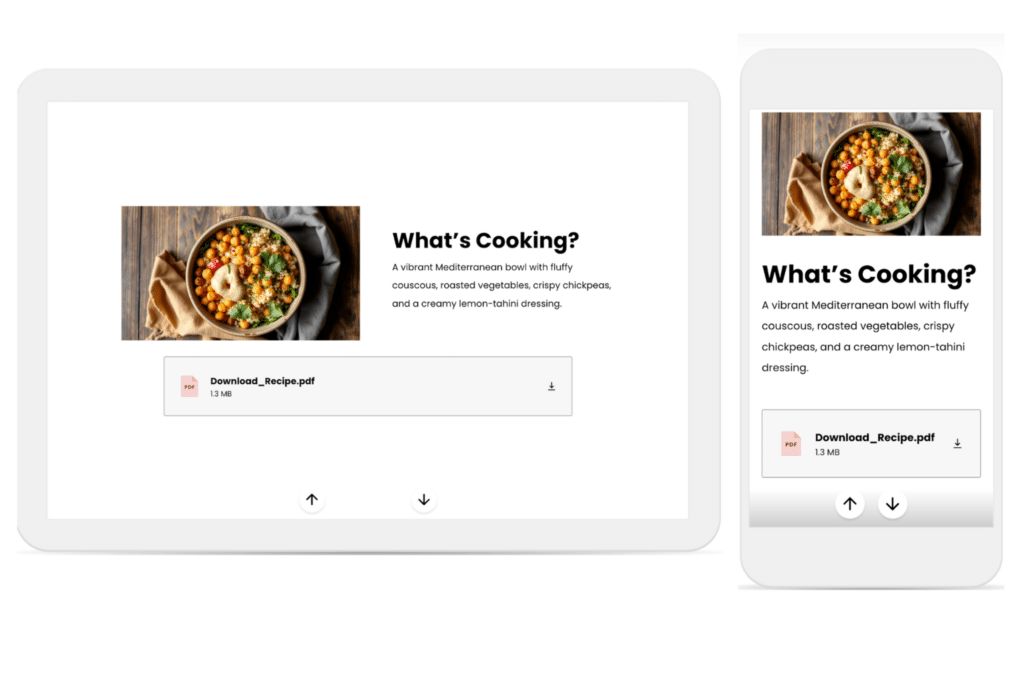
6. Improved content distribution
E-learning platforms open new doors for organizing and delivering recipes to customers. Consider these possibilities:
- Weekly courses. Turn each week’s recipes into cohesive online courses. Customers can preview dishes, learn techniques, and build progressive kitchen skills.
- Digital recipe collections. With an LMS (learning management system), you can create organized collections by cuisine, dietary preference, or skill level—allowing customers to browse, search, and revisit favorite recipes.
- Living content. Digital formats make it easy for businesses to acknowledge customer feedback and refine recipes in real-time. Update instructions, add tips, or enhance demonstrations—without reprinting a single card.
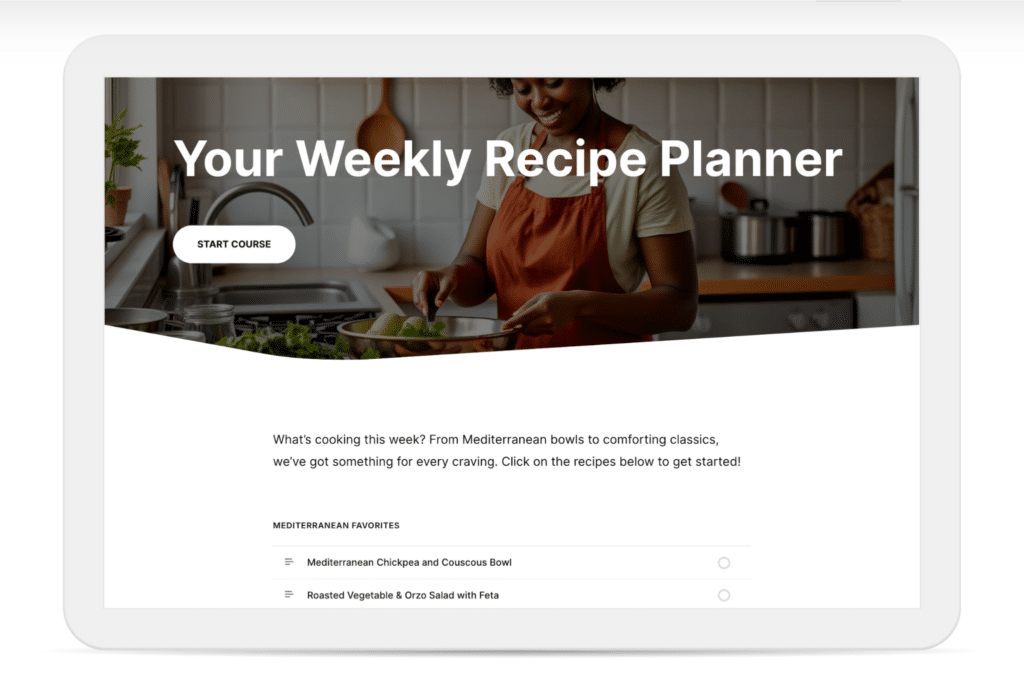
What could you transform?
Meal kit companies reinvented how we plan and shop for food—but they’ve yet to transform how we learn to prepare those meals. E-learning offers that unique advantage by delivering recipes that are clear, interactive, and accessible to everyone. By embracing this innovation, meal kit companies can gain a powerful competitive edge through enhanced customer experiences, stronger market differentiation, and deeper customer loyalty.
But the possibilities extend far beyond the kitchen. This example highlights a bigger opportunity: Learning happens everywhere, from kitchen counters to conference rooms. Think about the static content in your world—manuals, instructions, tutorials—and imagine the possibilities. What could you do with e-learning?
Ready to explore more creative ideas? Check out this article on creative e-learning ideas by Articulate authors.
You may also like
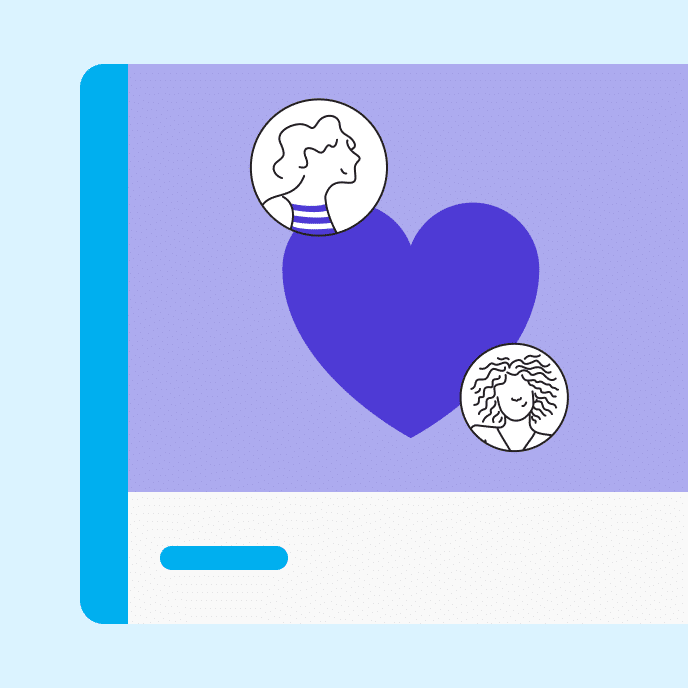
Online Training for Mortals: 6 Tricks to Make Complex Concepts Easy to Understand
Simplify complex training and help employees learn faster with these six e-learning tricks.
